Lauren Bacall’s 10 greatest performances
When we lost Lauren Bacall we lost a real-life, flesh and blood compendium of film history. She was the last of the greats. Bacall worked with a pantheon of directors spanning nearly the entirety of cinema, from Howard Hawks to Sidney Lumet, from Michael Curtiz to Robert Altman, from John Huston to Barbra Streisand, from Vincente Minnelli to Lars Von Trier. She was the essence of classic film noir, suffered haute couture misery in 50s melodrama, and even voiced Seth MacFarlane’s Family Guy. Sultry and crisp, she had a low threshold for bullshit, and was a diva without acting like one, game to work on a John Wayne western or anime in Howl’s Moving Castle. Here’s our top ten of her greatest performances.
What was your favourite Lauren Bacall film? Let us know below!

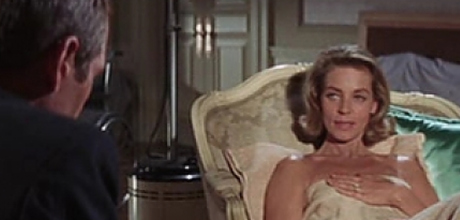
Harper (aka The Moving Target)
(Jack Smight, 1966)—A slick 1960s film noir, which means it’s more 1960s than noir, with Paul Newman as the private eye and where post-production-code L.A. is truly sleazy—you see the needle marks, and alcoholics are fat. Bacall plays Elaine Sampson, a paralyzed socialite who’s husband is missing, not that she cares: ‘Water seeks its own level, and that should leave Ralph bathing somewhere in a sewer.’

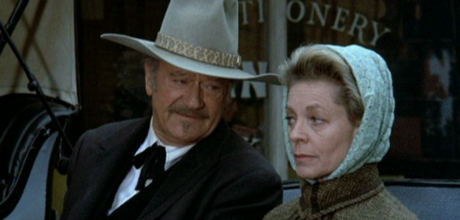
The Shootist
(Don Siegel, 1976)—After several films with John Wayne, this was Bacall’s first western. And his last. It chronicles the waning days of a legendary gunslinger, and inadvertently, the gunslinging actor. Bacall is the frontier widow who takes in the notorious shootist, ingloriously dying of cancer, and forms a grudging friendship. It’s about the death of the old west, when cars take the place of horses, and the honour of thieves and vigilante justice are usurped by the predatory greed of mercenaries looking to exploit legends for profit.

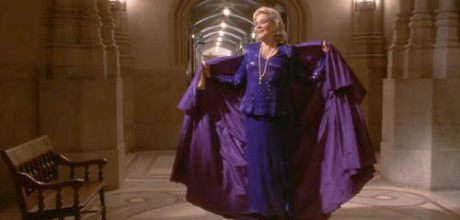
The Mirror Has Two Faces
(Barbra Streisand, 1996)—Streisand’s ugly duckling fairy tale, with Jeff Bridges as a Preston Sturges-esque sexually hibernated intellectual and Bacall as her flinty mother, Hannah Morgan, as imperious as a Disney villainess and owns the screen as great big female drag queens are apt to do. Gleefully biting and camp, a diva slap-down, it was a late, great role for a Hollywood luminary, and should have been Bacall’s victory lap to the Oscars. Though she was nominated (in some sort of cultural crime, her first and only) she lost out to Juliette Binoche for The English Patient.

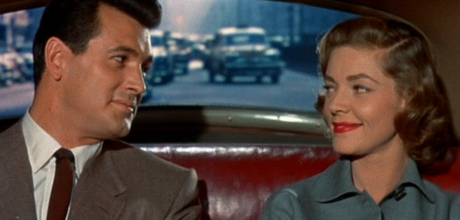
Written on the Wind
(Douglas Sirk,1956)—Technicolor eye-bomb melodrama, with emotions as big as the grill on a Buick Skylark, Bacall plays Lucy Moore Hadley, in love with a man who can’t throw a punch and has a low sperm count (Eisenhauer era code for gay) who suffers the indignities of Sirkian heroines by loving the wrong man and having a miscarriage, only to tearfully fall into the arms of a proper he-man. Played by Rock Hudson. (Which, if you look back, is kind of exactly what the film is about).

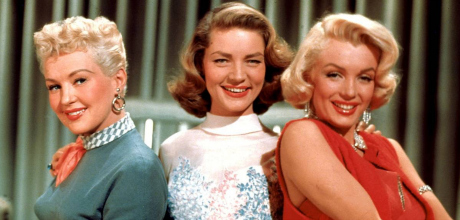
How to Marry a Millionaire
(Jean Negulesco, 1953)—The first film shot in Cinemascope, and the first with a stereo soundtrack, this was a monumental baton hand-off of three generations of iconic movie goddesses: Betty Grable, the woman responsible for more sins of Onan than other human being (her pin-up, with her ‘million dollar legs’—insured as such by Lloyds of London, though no mention of the deductible—adorning GI barracks from the Pacific to the Adriatic)— noir nymph Bacall, and Marilyn Monroe, a category and industry all her own. They play, not surprisingly, three golddiggers out to nab rich men. It was a time of primordial sexual politics; a good decade before Bella Abzug and Betty Friedan, a decade that celebrated the aeronautical achievement of the Wonderbra instead of bra burning, where women—good women, that is—will actually fall in love with poor men once they come to their senses, and be rewarded.

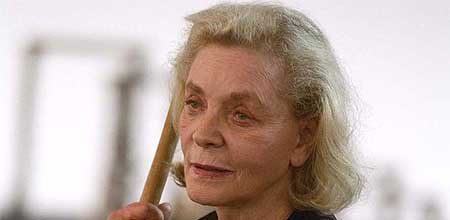
Dogville and Manderlay
(Lars Von Trier, 2003, 2005)—Von Trier doesn’t seem like a likely choice for a crowned head of Hollywood from a very different generation, but Bacall played both Ma Ginger and Mam is these two highly experimental films by a man not renown for endearing actresses. Nicole Kidman couldn’t even hack it for the second one, and here’s a near 80-year-old trekking out to an empty warehouse on a Scandinavian fjord.

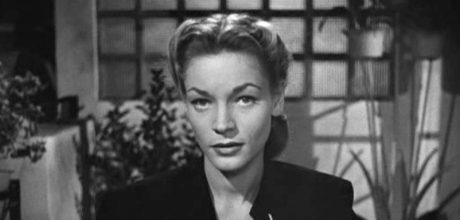
Dark Passage
(Delmer Daves, 1947)—The third of the four films that Bogart and Bacall did together, Dark Passage is meat from the dark heart of film noir. Rife with paranoia, bad and stupid love, spiteful dames, and a thoroughly satisfying body count, Bogart is an escaped convict, unseen for the first chunk of the film—from either relentless P.O.V. shots or bandages—and Bacall is tough and effulgent throughout, weak only for the wrong but right man.

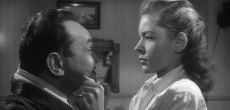
Key Largo
(John Huston, 1948)—A deserted hotel in the Florida keys, a hurricane bearing down, a band of Seminole Indians outside the door, a disillusioned war vet (Bogart), a gang of trapped gangsters including Johnny Rocco, Curly, and Toots, and Lauren Bacall, as the widow of dead serviceman. Even as the small town good girl, Nora Temple, she’s a ‘wildcat,’ and doesn’t think twice about horking a gob right in Edward G. Robinson’s face.

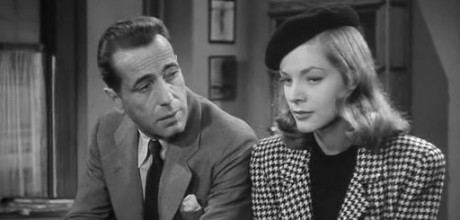
The Big Sleep
(Howard Hawks, 1946)—Bogart as Philip Marlowe, script by noble laureate William Faulkner, and easily one of the most iconic films noir. Bogart and Bacall were the A-listers of a B genre, and this film has everything one needs: nighttime on Warner’s backlot, blackmail, missing bodies, characters with names like Lash Canino and Mona Mars, dialogue that makes you feel pistol-whipped, and dames that need a good slapping.

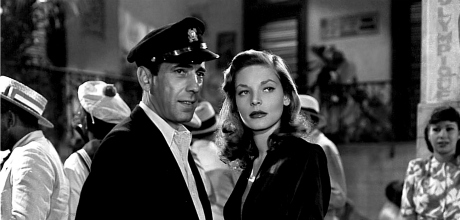
To Have And Have Not
(Howard Hawks, 1944)—Her first film, and so young, so fresh, and so cheeky! Just out the gate and immortalized with the line, ‘You know how to whistle, don’t you, Steve? You just put your lips together and blow.’ Written by two Nobel laureates this time, Faulkner again (screenplay) and Ernest Hemingway (source novel)(sort of), Bacall as ‘Slim’ Browning was both vulnerable and dangerous. Only a teenager at the time, she was able to hold her own in the toughest of genres with the toughest of the actors, Humphrey Bogart, who soon became her husband despite the twenty-five year age gap.



COMMENTS